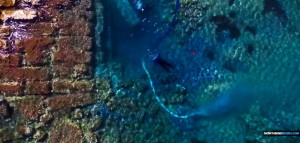“Paul, an apostle of Jesus Christ by the will of God, and Timothy our brother, unto the church of God which is at Corinth, with all the saints which are in all Achaia: Grace be to you and peace from God our Father, and from the Lord Jesus Christ.” 2 Corinthians 1:1, 2 (KJV)
Archaeologists have uncovered “mind-blowing” architecture almost perfectly intact from the ancient Biblical city of Corinth – despite being wiped out by a devastating earthquake 1,400 years ago.
The Greek city of Corinth, which was rebuilt in 44 BC by Roman Emperor Julius Caesar, holds major significance for Christians. Jesus’s disciple Paul is said to have visited there and wrote two letters about his time in Corinth – featured in the New Testament.
Just days ago, another group of archaeologists in Italy were amazed to discover the historic resort of Baiae in perfect condition. And new underwater excavations of Corinth’s harbour at the port of Lechaion have discovered wooden foundations preserved so well that they look new.
Roman artefacts including fishing lines and hooks, wooden pulleys and ceramics from Tunisia and Turkey were also found. Experts also think they have found an ancient lighthouse – depicted on coins from that time – and another monument.
The giant earthquake that hit the region caused huge layers of sediment to cover the artefacts and allowed them to barely be touched by decay, despite their age.
Bjørn Lovén, director of the Leichaion Harbour Project (LHP) which is responsible for the excavations, said: “For almost two decades I have been hunting for the perfect archaeological context where all the organic material normally not found on land is preserved.
“The potential for more unique discoveries is mind-blowing.”
Corinth officials built the harbour towns of Lechaion and Kenchreai to take advantage of its two-mile distance from the sea in Greece. The pair of harbours connected the ancient city to a host of Mediterranean trade networks and helped it become one of the most powerful and wealthy cities in the region.
The project also found vast blocks weighing up to five-tons, which were used to separate basins within the port. Scientists hope to use the research to find out just how much Lechaion changed at different time periods throughout history.








